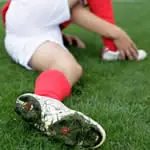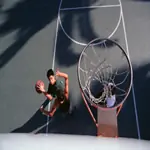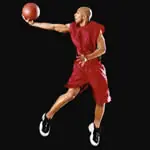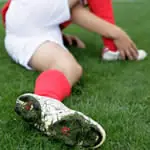Using only the amount of force necessary to get the ball to its target is called touch. Sometimes you need to pass with considerable force, for example, when you are passing the length of the court. Often much less force is required, particularly when the distance between passer and receiver is, at most, 15 to 20 feet.
Perhaps the situation which requires the most touch occurs when you must pass the ball to a player who is being fronted in the post position. You must make sure the pass is neither too short nor too long, but just right.
Using more force than is necessary often makes it harder for the receiver to catch the ball. How often, for example, have you seen a player pass the ball so hard to a teammate that they could not catch it?
Leading The Receiver
At its best, basketball is played on the move; the quicker, the better the quality of play. To play this way, you must learn to pass to where a player will be, not to where they are at the moment you execute a pass. The most dramatic example of passing to a spot where a teammate will be occurs when you pass the ball to the sweet spot. Your teammate cuts to the basket, leaps in the air, catches the ball in the sweet spot and dunks it.
Unfortunately, too often a player beats the defender and gets to the place where she/he expects a pass, only to have to wait for the ball to arrive (this is called parking). Passing after a player parks often results in a turnover, as the defense catches up with the play.
Playing Tall
The quickest way to advance the ball is with a pass. The most effective way to advance the ball in long passing lanes is with an overhead pass, either a one-handed baseball pass or a two-handed overhead. In full-court play, for example, where passing lanes are longest, the first passing option should always be an overhead pass. Receiving the pass high, ideally above head height, enables the receiver to pass quickly to another teammate, and so on. If you cannot use an overhead, use a bounce pass.
The same applies in front-court play, particularly when the first play option sequenced is a pass to a player in the post position. In addition, receiving the pass high, players can get their shot off quickly.
The least effective pass is the chest pass, particularly for a penetrating pass. Because chest passes travel at chest or shoulder height, they are much easier for a defender to deflect or intercept than overhead or bounce passes; all defenders, on or off the ball, have to do is hold their arms partially extended to the side, at shoulder height.
Passing Away From The Defense
Always pass the ball away from the defender, so that the receiver can use his/her body to protect the passing lane. For example, when a guard passes to a wing or a forward who is closely guarded in the right half of the court, he/she should pass the ball on a path that takes the ball on the sideline side of the left shoulder of the receiver. Never pass directly to a player, unless the defender is behind the receiver, as when a defender is playing behind a player in the post position.







Discuss This Article